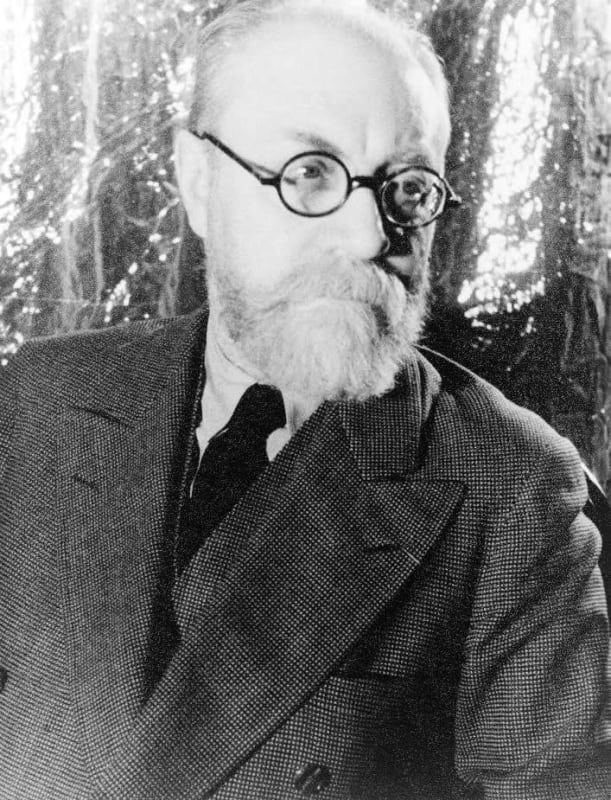Henri Matisse (1869–1954) was a leading figure in modern art, renowned for his role in the development of Fauvism and his innovative use of color and form. His work spanned painting, drawing, printmaking, sculpture, and cut-out works, leaving a lasting impact on 20th-century art.
Henri Matisse was born on December 31, 1869, in Le Cateau-Cambrésis, a small town in northern France. His father, a grain merchant, and his mother, a former schoolteacher, provided a supportive environment for Matisse’s early education. Initially studying law, Matisse switched to art after an illness in 1890 that allowed him time to explore painting.
In 1891, Matisse began formal art training at the École des Beaux-Arts in Paris, where he was influenced by the work of traditional artists and exposed to the burgeoning modernist movements. He also studied at the Académie Julian and the Académie des Beaux-Arts, where he was introduced to Impressionism and Post-Impressionism.
Artistic Development and Fauvism
Matisse’s early work was influenced by Impressionism and Post-Impressionism, but he soon developed a distinctive style that would become central to the Fauvist movement. Fauvism, characterized by its bold use of color and emotive brushwork, was founded in 1905 when Matisse exhibited at the Salon d'Automne alongside fellow artists such as André Derain and Maurice de Vlaminck. The term "Fauvism," derived from the French word for "wild beasts," was coined by art critic Louis Vauxcelles in response to the vibrant, non-naturalistic colors of the paintings.
Matisse’s key Fauvist works include:
- "Woman with a Hat" (1905) - Known for its vivid, unblended colors and expressive brushstrokes.
- "The Joy of Life" (1905–1906) - A seminal work that exemplifies the Fauvist emphasis on color and form.
Throughout the 1910s and 1920s, Matisse’s work evolved as he explored various styles and techniques. His interest in classical forms and motifs led to a more restrained color palette and a focus on structured compositions. He experimented with abstraction, still lifes, and figure studies, and his work during this period includes:
- "The Dance" (1910) - Celebrated for its rhythmic use of color and form, symbolizing movement and vitality.
- "The Red Studio" (1911) - A notable work that represents Matisse’s studio space with bold, flat colors and simplified forms.
In the 1930s, Matisse's work shifted towards a more decorative and simplified style, characterized by its use of vibrant colors and patterns. His later work includes:
- "The Snail" (1953) - A large cut-out piece that exemplifies his innovative use of color and form.
After suffering from health issues in the 1940s, including surgery for cancer, Matisse was largely confined to his bed. During this time, he began creating his famous "cut-out" works, which involved cutting painted paper into shapes and arranging them into compositions. This technique became a significant part of his later work and allowed him to continue his creative output despite physical limitations.
Key cut-out works include:
- "The Fall of Icarus" (1958) - Reflects his interest in mythology and narrative through vibrant, abstract shapes.
- "Blue Nude II" (1952) - A celebrated example of his innovative approach to form and color in the cut-out technique.
Henri Matisse passed away on November 3, 1954, in Nice, France. His legacy is marked by his profound influence on modern art and his innovative approaches to color, form, and composition. Matisse's work remains highly regarded for its emotional depth, vibrant use of color, and its significant role in the development of modernist art movements.
Matisse’s art has been the subject of numerous exhibitions and retrospectives worldwide, including major shows at:
- The Museum of Modern Art (MoMA), New York
- The Centre Pompidou, Paris
- The Tate Modern, London
- The Musée Matisse, Nice
Matisse’s impact on art continues to be felt, and his works are celebrated for their beauty, originality, and innovation.
